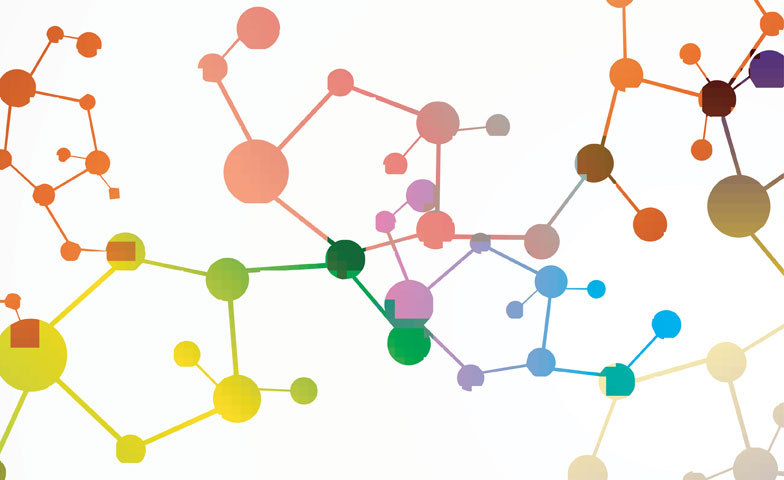4 Scientific Ways to Create a Great School
So there it is: the benefits of a cross-content approach are clear. But it begs another question: wouldn’t it be beneficial for us to apply the same cross-content, interdisciplinary framework to the world of sustained school improvement? Let’s take that question out for a spin, rev up its engines, and try to connect aspects of science to improvement in the critical middle grades (and beyond)!
If you’re an eager, passionate educator (and I know you are), take a cross-content look at your school through these four scientific lenses that all begin with the letter C:
- Constellations: I wrote about the concept of Constellational Leadership in an AMLE article a little while back, but it’s on my mind again for three reasons. First, for sustainable school improvement, it’s not about a couple of teacher or leader “superstars”; it’s about how we align all of the stars we have in order to create something stellar. Second, when we see a star in the sky, the light we see could be millions of years away. So for sustainable school improvement, it’s about seeing the immediate and long-term potential in the stars we have. Finally, this is also the time of year when we assess and evaluate the “brightness” of our stars. For sustained school improvement, it’s not always about how bright they are—it’s about how they are bright. Different stars shine in different ways for different reasons.
- Constructal Law: According to this theory (Adrian Bejan, 1996), flow systems thrive and evolve to provide easier access to imposed currents that flow through it. So a river evolves to provide water with an easier access to flow towards a larger body of water. Lungs and trees are shaped to provide an easier pathway for air to flow in and out. For sustained school improvement, we should see schools as constructed flow systems, as well, that should evolve to ensure increasingly better access for all of our stakeholders. Access to experience and shape curricula. Access to get and give information. Access to challenging, empowering learning experiences. Access to multiple opportunities for success. Therefore, we need to determine how our schools are evolving with equity-access in mind—and how they are impeding that access, as well.
- Circuitry: while I’m not a licensed electrician, I’ve put up lights on the holidays, so I know a thing or two about circuits. Depending on the type of circuit you have, if one bulb is out, the entire string of lights won’t work. Fortunately, with the holiday lights, you’re given another fuse to put into the bulb to get it going again. For sustained school improvement, it can be a very similar electrical circuit process. This is the time of year when we need to be particularly aware of the wattage of our educational bulbs—our own bulb and the bulbs around us. We may feel burned out. We may feel overheated. We may dim. Just like the string of lights, when one light goes down, it affects the entire circuit. Therefore, we need to be present and vigilant in each other’s lives and know when someone needs a lift, a listen, or another fuse to spark their spirit through the school year (and into next year).
- Collision theory: This theory posited by Max Trautz (1916) and William Lewis (1918) states that successful collisions between particles happen when there is enough energy—also known as activation energy—at the moment of impact to break the preexisting bonds and form all new bonds and result in a product. We can increase the number of successful collisions by increasing the concentration of the reactant particles or raising the temperature. For sustained school improvement, the collision theory spells out interesting parallels for teachers and leaders. To grow our schools and create a collaborative culture, we need to bring together more voices, minds, and hearts into the decision-making. No decisions should be made in isolation—one particle by itself. Rather, we need to increase the number of reactant particles so we can increase our chances for successful, purposeful collisions. Hence, we need to add more people (and more diverse people) to our leadership teams as well as our student and parent councils. We need to provide more time in faculty meetings for people to discuss school improvement goals. Let them be the reactant particles bouncing around and talking without constraints. Will it always result in a perfect product? Not necessarily. Will it be messy? Perhaps. However the process will increase school-wide dialogue and successful collisions. We should be careful about increasing the temperature to create these collisions. Creating a sense of urgency and passion is critical, but teachers and stakeholders already feel enough heat and pressure when it comes to producing results. Heat can be an unpredictable element in the area of sustained school improvement. Use it wisely!
This cross-content, scientific examination of school improvement was a stretch for me, but sometimes to act on a concept in a new way, we need to see it through a new lens. So that’s the challenge: invite your faculty and staff to look at your school, your vision/mission, middle level education, etc., using a cross-content lens. It may be just the thing to awaken, heighten, and rekindle their passion for sustained school improvement.
